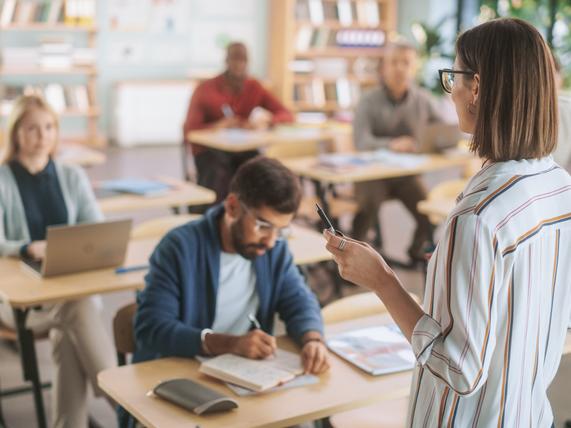
Conjure the magic of learning with facilitation
Facilitating learning is about helping it emerge, whether by drawing on collective wisdom or awareness of different perspectives, clarifying unexamined beliefs and assumptions, or scaffolding towards achievable learning outcomes. Making learning happen means work needs to be done by the learners – the question is what, when and how. That’s what facilitation is: deciding what those learning activities are, when they’ll be introduced and how they’ll be implemented.
At the same time, educators must prioritise versatility in the design and delivery of both the content of their course and how it progresses. If you can apply diligence in the design and patience in its execution, magic happens.
- Find a balance with student-centredness
- Flip students’ presentations for more in-depth learning
- Green light student engagement: Squid Game tactics in the classroom
We’ll look at the zone of proximal development and coaching to highlight the versatility facilitation requires. What should you consider and how do you do it?
In the zone
The discourse and research built on Lev Vygotsky’s theory of the zone of proximal development has shown that dynamic interactional support from those with more knowledge is crucial to learning. Without it, learning does not happen.
Ask these questions:
- What materials and activities do learners need to engage with to become familiar with the new information? How can they then develop knowledge and skills?
- What questions will help them relate, connect the dots, think more critically and make meaning?
- What knowledge gaps will require just-in-time teaching so that students can be scaffolded to progress?
The combination of hard scaffolds, such as materials; soft scaffolds, such as verbalised questions in discussions; and direct instruction requires planning, design and dynamic interaction.
Driving the coach
Facilitating a large group of students inevitably means juggling a range of individual motivations and abilities.
While every student is unique, they can also share some commonalities that facilitation can support. This is where facilitation and coaching skills overlap. In coaching, the learner needs to be motivated, and acquire and develop the skills themselves. In facilitation, different types of support are provided to members of the class.
Learning needs are addressed at different levels – at the class, small group and individual level. For example, when students are learning in groups, the teacher may see a couple of teams struggling with the same issue. They can then speak to the entire class about it, helping students reflect on what they’re learning and understand they are not alone. Educators can also highlight common misconceptions at the appropriate time, either by giving students advance warning or asking questions to prompt critical thinking and discussion as a class.
In both facilitation and coaching, support students with generic and subject-specific resources. Given the limited time academics have with their students one-on-one, it’s important to implement skills that they can use to help themselves learn.
Give your students skills for the future
We live in an age when information and, now, instant plausible responses generated by AI are at learners’ fingertips. As educators, we need to be aware of how our students may be using technology in the process of learning. We can then design and facilitate activities to guide students in using these tools productively and responsibly.
Let’s get back to the basics. We know skills need practice. Using technology in this way is an ideal opportunity to support practice and embed personalised learning.
Stay versatile
To facilitate learning, we as educators need to create and curate instructional material and use digital tools to provide direction for our learners.
To facilitate in-person or synchronous online learning, we need to closely observe the learning process. This allows us to provide timely interventions and make decisions on our feet to adapt and adjust.
We know the educator is the crucial factor in setting the tone for learning and creating an environment in which learners feel safe to learn together. Building rapport is not just a matter between the educator and their students but also among the learners themselves – because a supportive environment includes everyone. The educator walks a fine line between using their authority to judge what is or isn’t negotiable yet allowing the students to take greater responsibility for their education, and feel a sense of responsibility to learn.
Facilitation is not a path all educators are willing to tread, given the effort and risks involved. But when it’s well-planned and flexible enough to allow for versatility, the magic that sparks learning will occur again and again.
Tan Chin Pei is senior educational developer at the Singapore Institute of Technology.
If you would like advice and insight from academics and university staff delivered direct to your inbox each week, sign up for the Campus newsletter.




